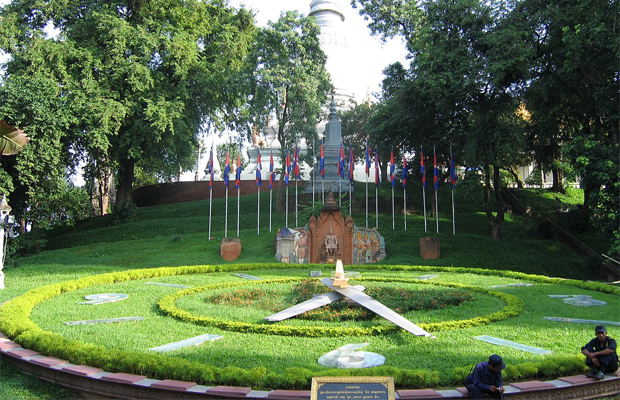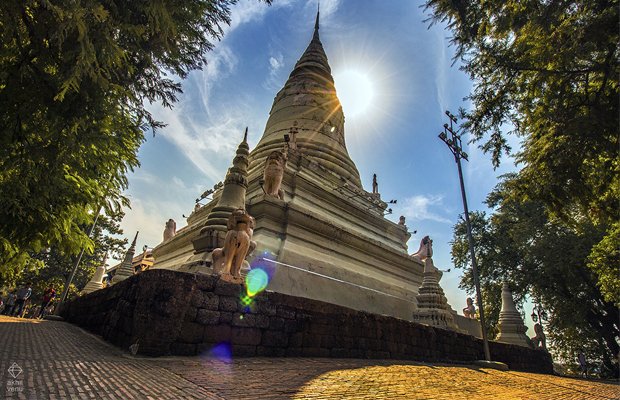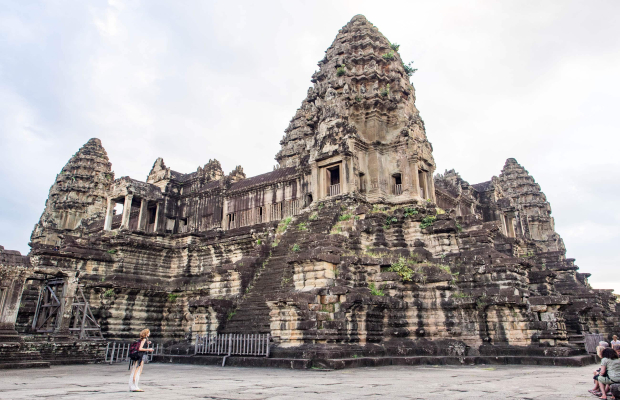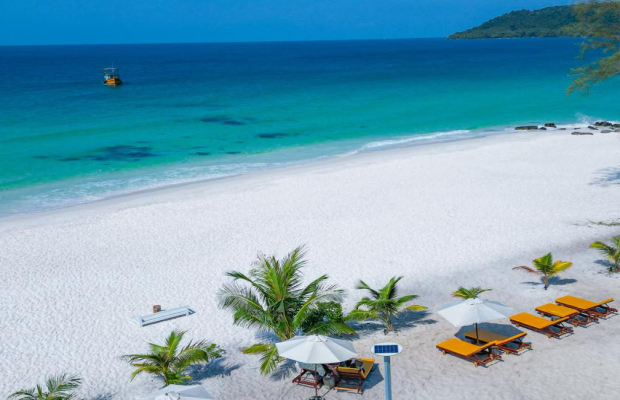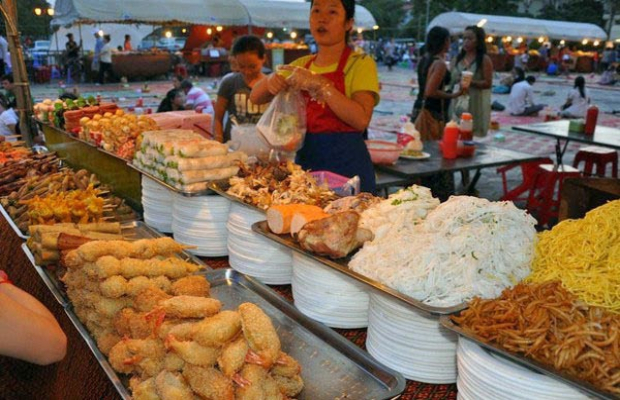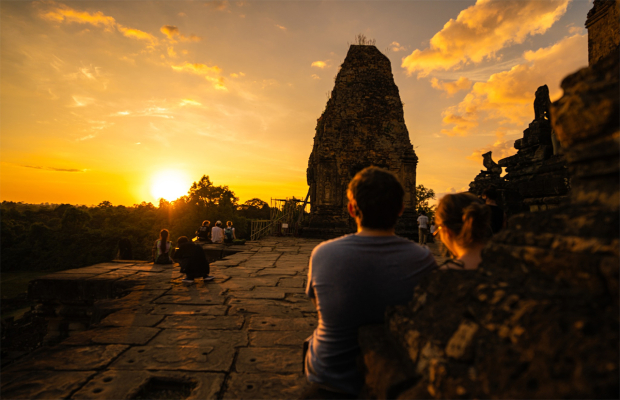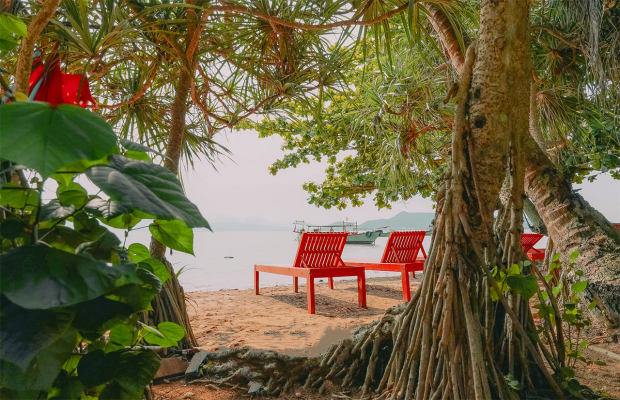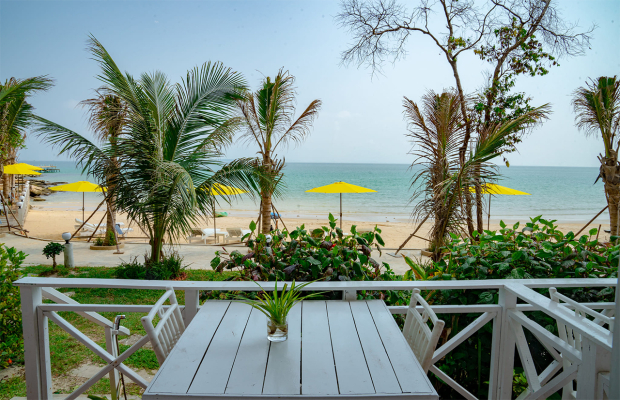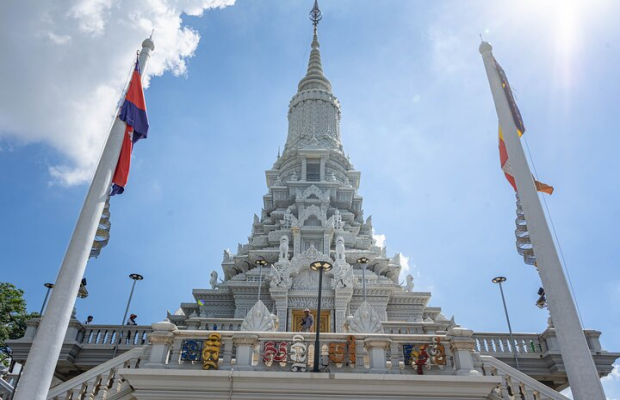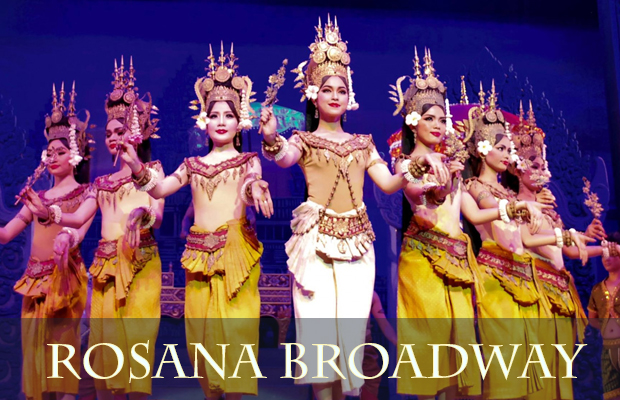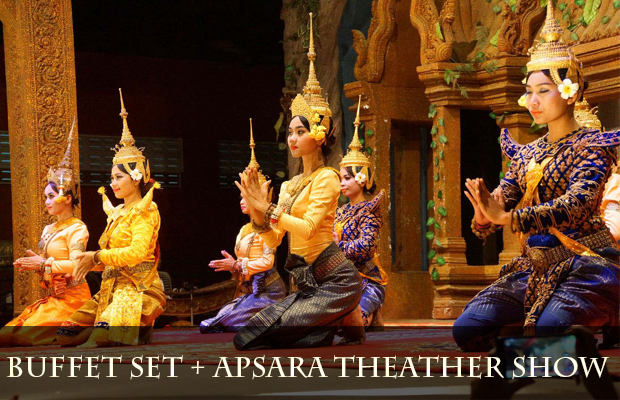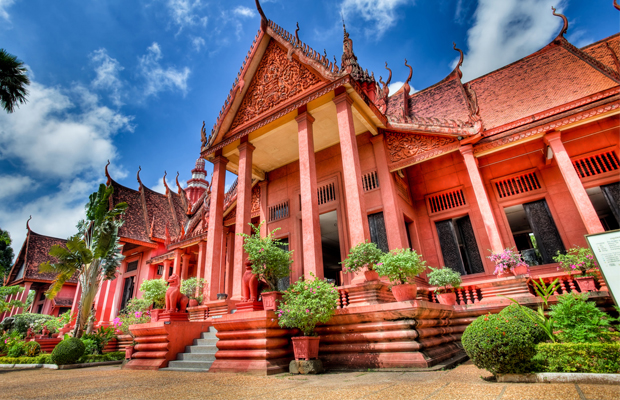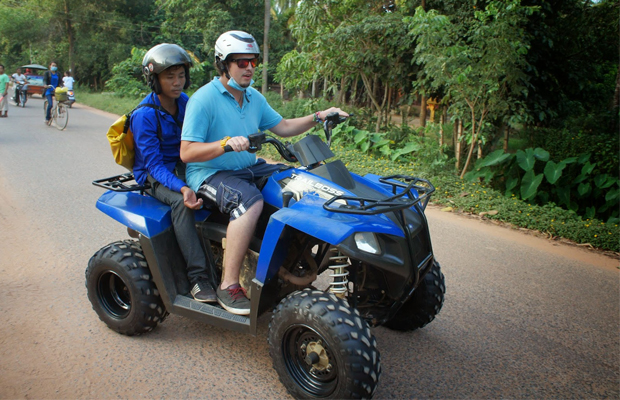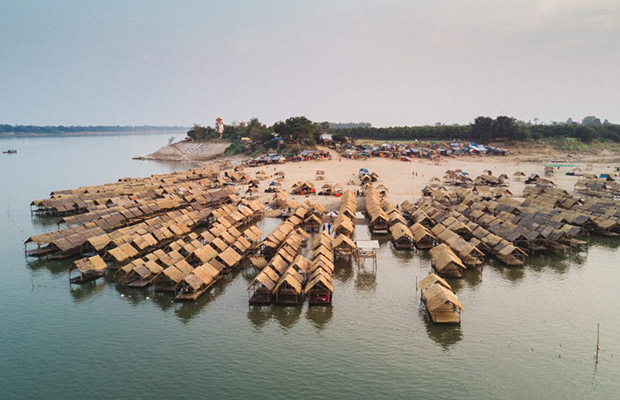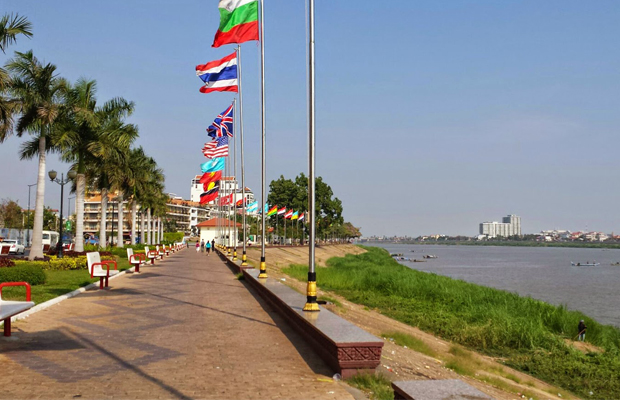Explore
Wat Phnom, Phnom penh
Overview of Wat Phnom
Wat Phnom, Phnom Penh the namesake and symbol of the capital city of Phnom Penh, sets prominently atop an artificial 88.5 ft (27 meter) hill (or 'Phnom') near the Tonle Sap River in the northeast section of the city. Legend relates that Daun (Grandmother or Lady) Penh, a wealthy widow, found a large koki tree in the river. She hoped to use it for a house, but inside a hollow of the tree she found four bronze statues of the Buddha (and possibly a stone statue of Vishnu); she erected a small shrine on the site to protect them. Eventually this became a sacred site and sanctuary where people would make wishes and pray for good luck and for success in school or business. Another account of the founding of the wat suggests King Ponhea Yat (r. 1405-67), built the sanctuary (vihara or vihear) when he moved his capital from Angkor to Phnom Penh in 1422. The prominent stupa immediately west of the sanctuary, or vihara (vihear) contains the ashes of the king.
The complex is oriented toward the east, where a broad staircase, flanked by nagas, guardians and lion-like figures, leads directly to the vihara. The figures are all of recent vintage. This east entry is also usually filled with vendors, beggars, charlatans, a variety of children-all creating a sometimes annoying but generally a friendly and almost circus-like atmosphere.To add to this feeling, one can even encircle the base of the hill on Sam Bo, the 46 year old elephant that has been plying the route since 1983.
The sanctuary itself has frequently been rebuilt: in 1434, several times in the 19th century and in 1926. There were, of course, major renovations necessitated by the rule of the Khmer Rouge and Pol Pot. That era of the late 1970s had a devastating impact not only on Wat Phnom, but also on the personnel and the properties of Buddhist communities and on virtually all other communities throughout Cambodia. Many parts of the sanctuary were repaired; new statues and shrines were added, while the sanctuary has been covered with new plaster and paint that mask the at least 600 history of the wat. The interior has a central altar complex with a large bronze seated Buddha surrounded by other statues, flowers, candles and items of devotion and worship. The walls are covered with paintings, especially of Jataka stories of the Buddha's earlier reincarnations before his enlightenment. There are also murals depicting stories from the Reamker, the Khmer version of the Ramayana. Of greatest significance are the older paintings in the upper portions of the building, though they are disintegrating and darkened by the smoke from incense (and are difficult to photograph). It is hoped that somehow these will be cleaned and restored rather than just overpainted. The newer paintings in the bottom tiers are somewhat balanced, traditional and modern.
At the southwest corner of the vihara, between the vihara and the stupa, there is a small shrine to Daun Penh. The front is often crowded with the faithful bringing their prayers and food offerings to the woman deemed responsible for the founding of the wat; the shrine is considered to be especially helpful to women.
There are numerous other shrines and other activities on or at the base of the hill. There are gardens that the French laid out in the late nineteenth century and shrines that reflect Daoist, Confucian, Hindu beliefs, as well as Vietnamese interests reflected in the shrine to Preah Chau. No attempt has been made to chronicle these other elements in this account of Wat Phnom.
History of Wat Phnom, Phnom Penh
Legend relates that Daun Penh, a wealthy widow, found a large koki tree in the river. Inside the tree she found four bronze statues of the Buddha. Lady Penh constructed a small shrine on an artificial hill to protect the sacred statues. Eventually this became a sacred site and sanctuary where people would make blessings and pray.
Another account of the founding of the wat suggests King Ponhea Yat, built the sanctuary (vihear) when he moved his capital from Angkor to Phnom Penh in 1422. The prominent stupa immediately west of the sanctuary contains the ashes of the king and his royal family.
Wat Phnom is the center of celebration during Khmer New Year, and Pchum Ben.
Architecture of Wat Phnom, Cambodia
The sanctuary itself was rebuilt several times in the 19th century and again in 1926. The interior has a central altar complex with a large bronze seated Buddha surrounded by other statues, flowers, candles and items of devotion and worship. The walls are covered with murals, especially of Jataka stories of the Buddha's earlier reincarnations before his enlightenment. There are also murals depicting stories from the Reamker, the Khmer version of the Ramayana. The newer murals in the bottom tiers are somewhat balanced, traditional and modern.
The southwest corner of the vihear and stupa, is a small shrine dedicated to Lady Penh. The front is often crowded with the faithful bringing their prayers and food offerings to the woman deemed responsible for the founding of the wat.



